by Bryan Jauregui, Todos Santos Eco Adventures. All photos by Kaia Thomson. This article was originally published in Janice Kinne’s Journal del Pacifico.
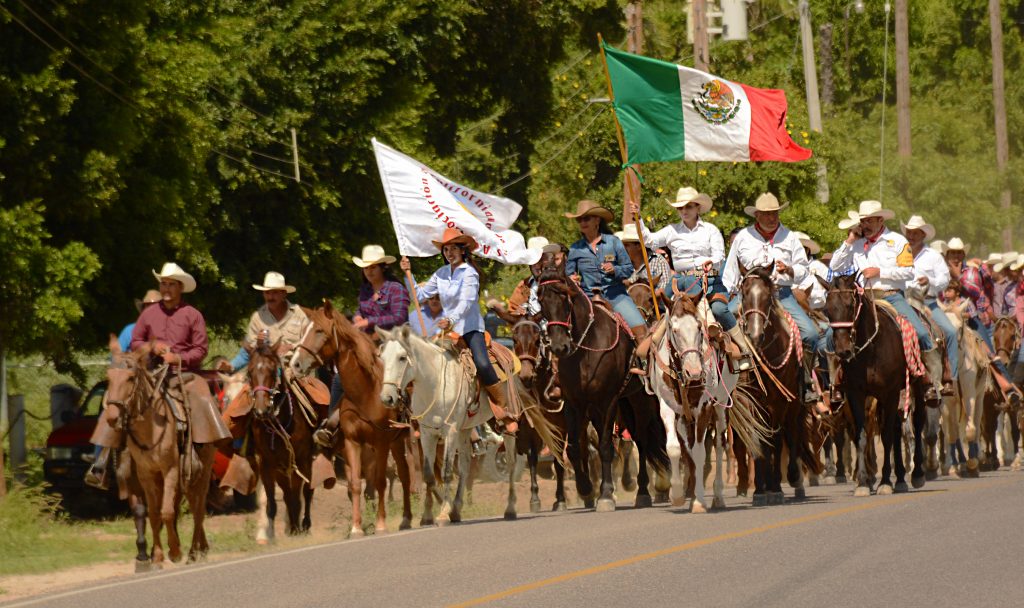
“After God, we owed our victory to the horses.” When Hernan Cortez arrived on the eastern coast of Mexico in 1519 and defeated the Mayan people there, horses had not been seen on the North American continent in over 10,000 years. Their sudden appearance with men on their backs terrorized the local population nearly as much as the noise and deadly impact of the musketry, and victory came readily to Cortez.
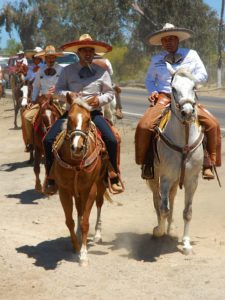
Photo by Kaia Thomson
From that first triumph the horses continued their conquest of the Americas, with men defeating one culture from their backs while creating others centered around their skills. Spanish settlers arrived from Cuba and Hispaniola bringing livestock and horses with them and great ranching haciendas built on horse prowess spread across Mexico and points north. The haciendas began competing among themselves to display their horse and animal husbandry skills and the tradition of Charrería, similar to rodeo, was born. Descendants of the 16 horses that Cortez brought with him as well as those brought by other settlers spread out across the continent in feral bands, becoming the progenitors of the Mexican Galiceño, the American Indian Horse and the great Mustang herds of the American west. Two of the great horse cultures of the world arose on the North American continent – cowboys and Indians by any other name – and the once terrorized indigenous peoples who survived the onslaught of the Spanish later became formidable horsemen.
In Baja California Sur (BCS), when the European Jesuits were expelled from the peninsula in the late 1700s, many of their lands went to the ranchero horsemen who had helped the padres develop their missions, and their independent ranching culture built around horses and mules became the defining culture of the state. For festivals or fiestas they would often ride their horses for days across the mountains, picking up more riders as they went, and having parties each night along the way. This was the ranchero version of the Spanish cabalgata, or parade of horsemen. In many ways, after God, Mexican culture in general and Baja California culture in particular, owed its victory to the horses.
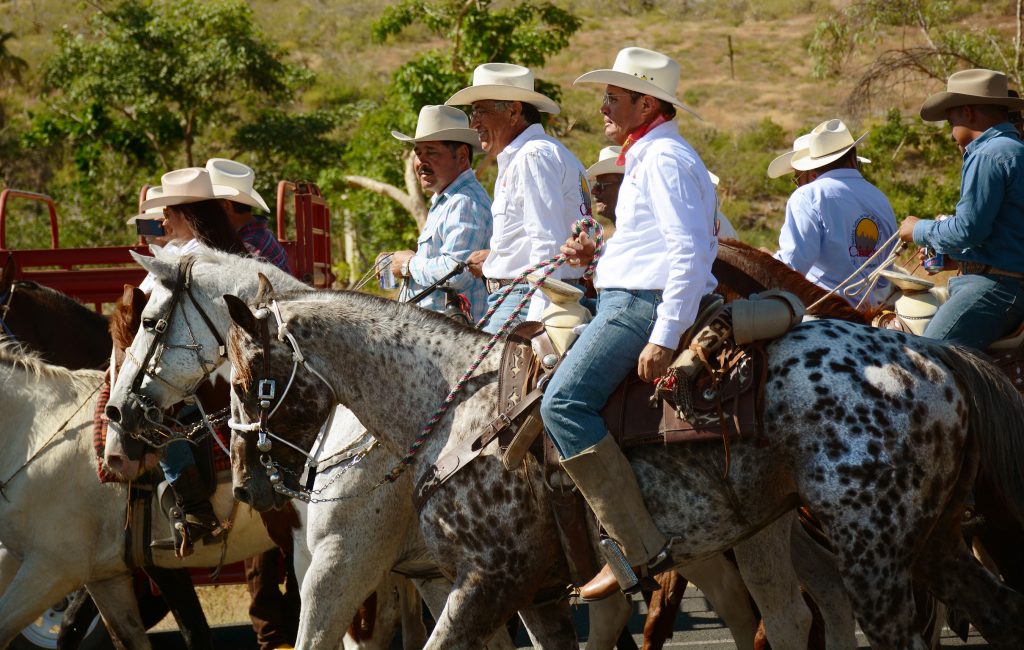
But, as it does, the world changed. As modern generations of Mexicans and Baja Californians became more urbanized, they came to think of “horsepower” mainly as a term to define engine output and the great horse-based traditions of Charrería and cabalgata began to fade. “When I first came to BCS 43 years ago, there were no cabalgatas and very few Charrería events. That part of the culture was almost dead” recalls Fermín Reygadas, a professor of Alternative Tourism at the Autonomous University of BCS. “Then, about 30 years ago, ranchers in the Sierra de la Gigante in the northern part of the state began making a concerted effort to keep their culture alive and restarted the traditional San Javier cabalgata. This cabalgata is reminiscent of the cabalgatas that originated as early as the 1500s in Spain. These were ostensibly religious events in which villagers would ride horses and walk from place to place carrying the image of the Virgin of Rosario. When they stopped at night to rest there would be music, singing, dancing and of course lots of drinking. This fundamental aspect of the cabalgata is also a big feature of the resurgent cabalgatas in Baja.”
In the southern part of the state of BCS, the cabalgatas only returned 15 years ago and for a distinctly secular event – a birthday party. Recalls Arturo Geraldo, president of the BCS Association of Riders (Asociacion SudCaliforniana de Jinetes AC), “In 2005 a horse lover in Cabo decided he wanted a cabalgata for his birthday, so we put together about 36 riders and made a parade from Santa Anita to Cadueño, about a 4-hour ride. Based on the success of that cabalgata we formed the Association of Riders and we have been organizing cabalgatas across the state ever since. Now, on any given weekend in BCS there are at least two cabalgatas taking place, many of them for birthday celebrations, some for funerals and some just because it’s fun.”
Arturo is extremely pleased but not surprised at the scale at which cabalgatas have returned to the state. “Here in BCS we come from horses, we come from the ranches. Even those of us who now live in the cities have our roots in the ranches and the cabalgatas are such a fun way to celebrate our heritage and keep our traditions alive.” Javier Pavel, a La Paz based horse trainer and farrier who is the veteran of dozens of cabalgatas around the state agrees. “The cabalgatas are a wonderful way to pass on our traditions to our children and I love taking my young son on as many cabalgatas as possible.”
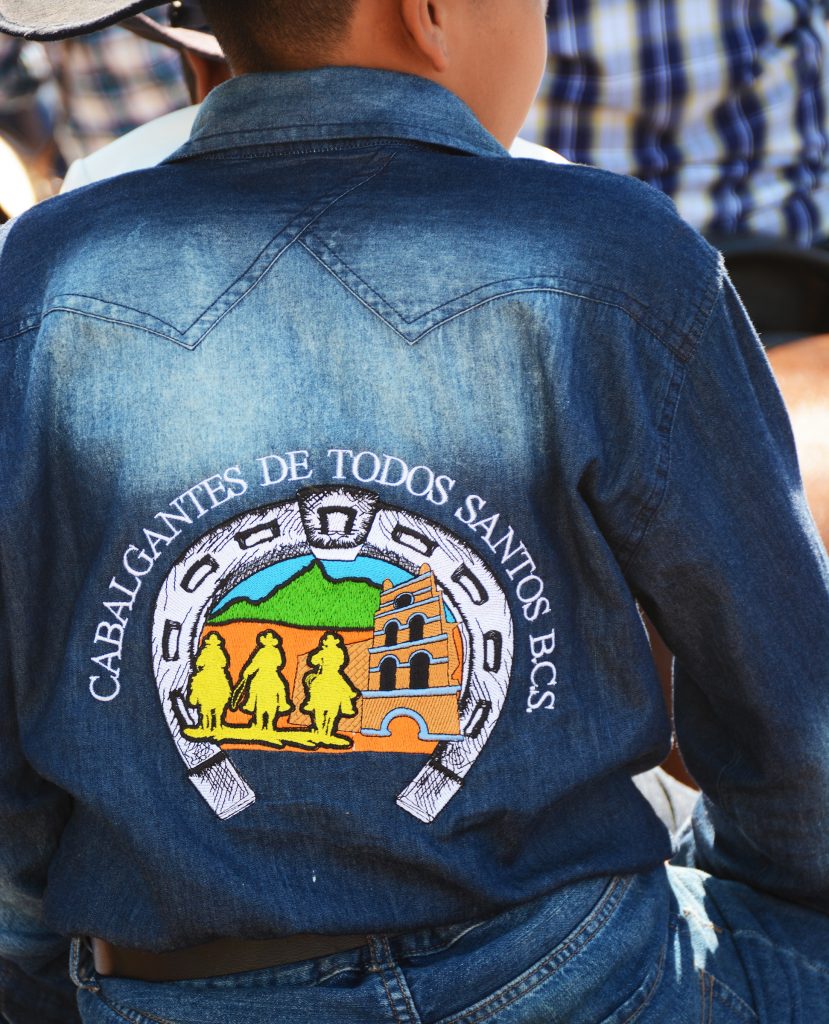
Miguel Angel León Amador is the president of Cabalagantes Unidos de Todos Santos-Pescadero and he loves how the cabalgatas have grown in popularity. “Todos Santos is the mother of all cabalgatas in BCS” says Miguel Angel. “When we started it 14 years ago to celebrate Nuestra Senora de Pilar, the patron saint of Todos Santos, we had 50 riders on the trip from La Paz to Todos Santos. Last year we had 502 riders on 502 horses and mules. Then there were all the people to support the cabalgata including veterinarians, drivers, cooks, all pulling horse trailers, and bringing food, water and supplies for both riders and horses – it ended up being about 1,500 people!” Miguel Angel reckons that about 50% of the riders are from ranches and the other 50% from cities and towns.
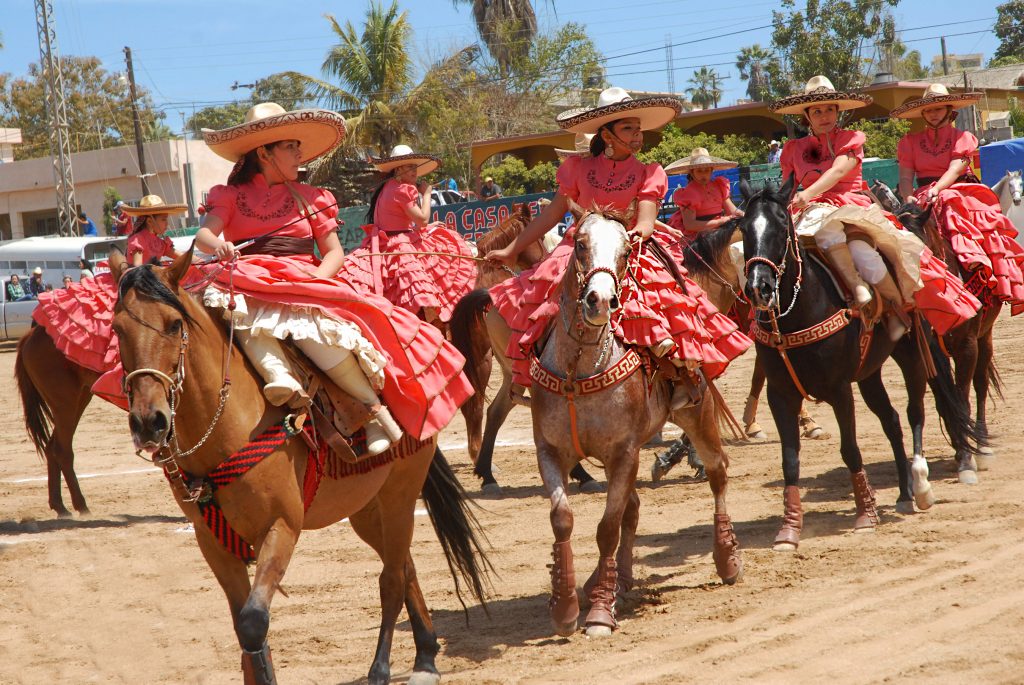
While camaraderie and friendship are the main draws for most riders, there is sometimes also a formal entertainment component to the cabalgatas and very few things are as entertaining as the dazzling display of horsemanship put on by the women of the escaramuza. Kaia Thomson, a cabalgata veteran and student of Mexican horse culture explains. “The word escaramuza means skirmish in Spanish. During the revolution women on horseback would work to trick the enemy by riding off in the opposite direction of the army, cutting their horses back and forth to kick up dust and lure the enemy away from the soldiers. It is that daring horse-work that is the hallmark of escaramuza routines today, in which teams of 8 women riding sidesaddle in colorful flowing dresses ride at each other at a full gallop in uninterrupted succession, drill team style, executing heart-stopping movements that include crosses, quick turns, slide stops and passes in synchronized flashes of speed and color. They are incredibly skillful and it is thrilling to watch.” The women of the escaramuza are part and parcel of the Charrería tradition, which is officially the national sport of Mexico. Notes Fermin, “The stadium where the Charrería competitions are held near my university sat empty for many years. Now I see it regularly in use, often packed to capacity. It is another indication of the revitalization of and appreciation for the great horse culture of Mexico and Baja California Sur.”
The resurgence of the cabalgata tradition has had a powerful economic impact on the state as well. Notes Kaia. “When I first came to Todos Santos with my horses 15 years ago there was very little infrastructure in place to care for horses. I had to feed the horses rabbit pellets because there was no grain and the neighbors all wanted to borrow my pitchfork because they just weren’t available in stores. Now large feed and tool supply companies have a huge presence in the state.” Arturo agrees. “Before we started the cabalgatas saddle makers were almost extinct here and there was no place for leather repair. Now you can find them everywhere. Same goes for horse veterinarians. They were in very short supply 15 years ago and now there is excellent medical care available for horses.”
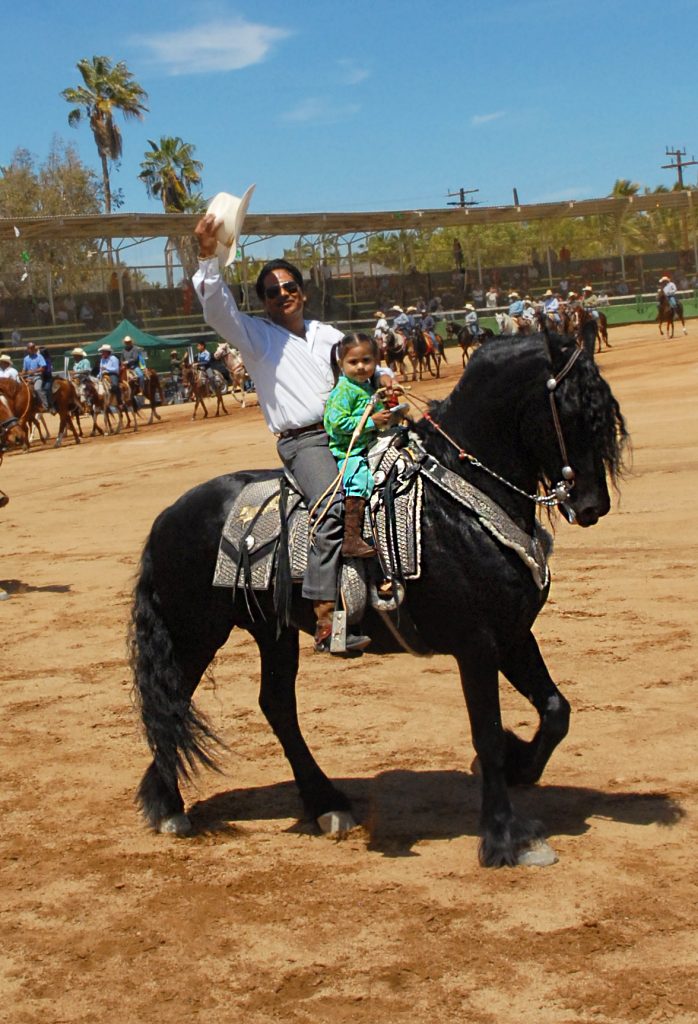
The horses have changed a lot too. “In the old days everyone in the cabalgatas just rode their regular working criollo (mixed blood) horses that they used on the ranches,” recalls Arturo. “Now it is like a beauty pageant for horses!” Don Rene Ruiz, a horse breeder and passionate cabalgata rider imported Tennessee Walkers in 2006 for the softer ride they offer. He notes the change in horses too. “Now ranchers like to keep a good, smaller criollo horse that is well-suited to ranch tasks, as well as a fancier horse like an Española or Fresian for cabalgatas.”
While the horses may be getting fancier, everyone agrees that cabalgatas are fundamentally family-focused, friendly, egalitarian affairs and that absolutely everyone is welcome. Recalls Kaia, “I’ll never forget one year seeing a kid on a skinny horse who had made a saddle pad out of an old bathmat and tied it on with a car seat belt. He’d made his bridle out of hay twine and he’d clearly made an effort to straighten his clothes. This kid was up at the head of the cabalgata riding proudly right next to Arturo. In the cabalgatas everyone puts their best foot forward, no matter what that best is, and everyone is happy to have all the riders that want to join. It’s a wonderful thing.”
Arturo agrees. “This is why I don’t quit. The cabalgata is one big family that is taking pride in our ranchero culture. My motto for cabalgatas is ‘Let’s ride, let’s make friends.” Friendship, pride and a revitalization of the great egalitarian ranchero traditions in BCS. For this, we owe our victory to the horses.
© Copyright Sergio and Bryan Jauregui, Casa Payaso S de RL de CV, 2020
